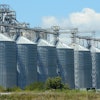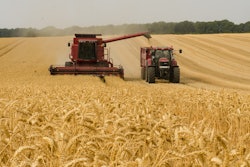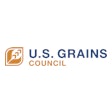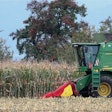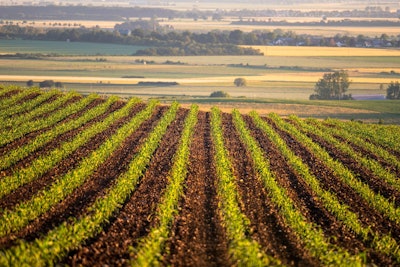
Agriculture Secretary Tom Vilsack just announced that USDA will open enrollment in the Conservation Reserve Program with higher payment rates, new incentives, and a more targeted focus on the program’s role in climate change mitigation.
Additionally, USDA is announcing investments in partnerships to increase climate-smart agriculture, including $330 million in 85 Regional Conservation Partnership Program projects and $25 million for On-Farm Conservation Innovation Trials. Secretary Vilsack made the announcement at Wednesday’s White House National Climate Task Force meeting.
“We need to invest in CRP and let it do what it does best — preserve topsoil, sequester carbon, and reduce the impacts of climate change," says Vilsack.
National Grain and Feed Presidentand CEO Mike Seyfert says his association looks forward to working with Congress and the Biden administration on promoting working lands conservation programs as climate-smart solutions that keep U.S. agriculture competitive.
"The NGFA believes CRP should be targeted at the most environmentally sensitive portions of farms, and avoid enrollment of whole farms or large tracts of productive farmland, says Seyfert. "Programs that drastically increase acreage idling in the United States send market signals to competitors to plant more acres, resulting in negative climate and environmental impacts.
"We look forward to hearing additional details from USDA and working with the department to ensure this acreage is targeted for the most substantial environmental benefits while preserving U.S. agricultural productivity and competitiveness.”
Conservation Reserve Program
USDA’s goal is to enroll up to 4 million new acres in CRP by raising rental payment rates and expanding the number of incentivized environmental practices allowed under the program. CRP is one of the world’s largest voluntary conservation programs with a long track record of preserving topsoil, sequestering carbon, and reducing nitrogen runoff, as well providing healthy habitat for wildlife.
c反应蛋白是一种强大的工具时气候mitigation, and acres currently enrolled in the program mitigate more than 12 million metric tons of carbon dioxide equivalent (CO2e). If USDA reaches its goal of enrolling an additional 4 million acres into the program, it will mitigate an additional 3 million metric tons of CO2 equivalent and prevent 90 million pounds of nitrogen and 33 million tons of sediment from running into our waterways each year.
“We want to make sure CRP continues to be a valuable and effective conservation resource for our producers for decades to come,” said Vilsack. “USDA will continue to find new and creative ways of putting producers and landowners at the center of climate-smart practices that generate revenue and benefit our planet.”
CRP’s long-term goal is to establish valuable land cover to help improve water quality, improve soil health and carbon sequestration, prevent soil erosion, and reduce loss of wildlife habitat. USDA’s Farm Service Agency (FSA) offers a number of signups, including the general signup and continuous signup, which are both open now, as well as a CRP Grasslands and pilot programs focused on soil health and clean water.
New Climate-Smart Practice Incentive
To target the program on climate change mitigation, FSA is introducing a newClimate-Smart Practice Incentivefor CRP general and continuous signups that aims to increase carbon sequestration and reduce greenhouse gas emissions. Climate-Smart CRP practices include establishment of trees and permanent grasses, development of wildlife habitat, and wetland restoration. The Climate-Smart Practice Incentive is annual, and the amount is based on the benefits of each practice type.
Higher Rental Rates and New Incentives
In 2021, CRP is capped at 25 million acres, and currently 20.8 million acres are enrolled. Furthermore, the cap will gradually increase to 27 million acres by 2023. To help increase producer interest and enrollment, FSA is:
- Adjusting soil rental rates. This enables additional flexibility for rate adjustments, including a possible increase in rates where appropriate.
- Increasing payments for Practice Incentives from 20% to 50%. This incentive for continuous CRP practices is based on the cost of establishment and is in addition to cost share payments.
- Increasing payments for water quality practices.率从10%增加到20% water quality benefiting practices available through the CRP continuous signup, such as grassed waterways, riparian buffers, and filter strips.
- Establishing a CRP Grassland minimum rental rate.This benefits more than 1,300 counties with rates currently below the minimum.
Enhanced Natural Resource Benefits
To boost impacts for natural resources, FSA is:
- Moving State Acres for Wildlife Enhancement (SAFE) practices to the CRP continuous signup.Unlike the general signup, producers can sign up year-round for the continuous signup and be eligible for additional incentives.
- Establishing National Grassland Priority Zones.This aims to increase enrollment of grasslands in migratory corridors and environmentally sensitive areas.
- Making Highly Erodible Land Initiative (HELI) practices available in both the general and continuous signups.
Expanding Prairie Pothole Soil Health and Watershed Programs
CRP has two pilot programs ― the Soil Health and Income Protection Program (SHIPP) and the Clean Lakes, Estuaries and Rivers 30-year contracts (CLEAR30).
- For SHIPP, which is a short-term option (3, 4, or 5-year contracts) for farmers to plant cover on less productive agricultural lands, FSA will hold a 2021 signup in the Prairie Pothole states.
- The CLEAR30 pilot, a long-term option through CRP, will be expanded from the Great Lakes and Chesapeake Bay pilot regions to nationwide.
Increasing Technical Assistance Capacity and Impact Measurement
USDA technical assistance through the Natural Resources Conservation Service (NRCS) is critical to enable producers to plan and implement conservation practices that are appropriate for their needs. To ensure increased enrollment and support for producers, USDA is increasing NRCS technical assistance capacity for CRP by $140 million.
Additionally, in order to better target the program toward climate outcomes, USDA will invest $10 million in the CRP Monitoring, Assessment and Evaluation (MAE) program to measure and monitor the soil carbon and climate resilience impacts of conservation practices over the life of new CRP contracts. This will enable the agency to further refine the program and practices to provide producers tools for increased climate resilience.
To learn more about updates to CRP, download the “What’s New with CRP”fact sheet.

